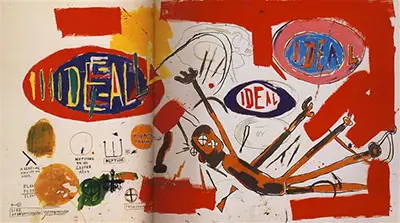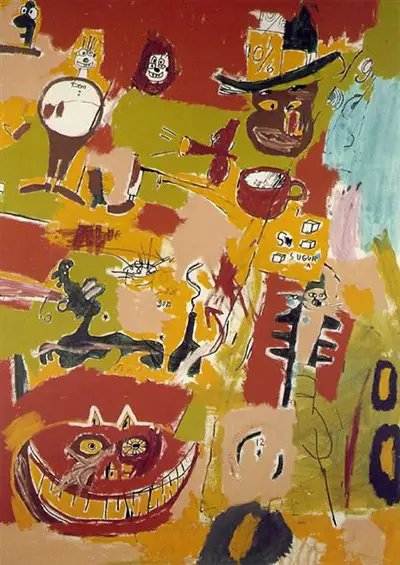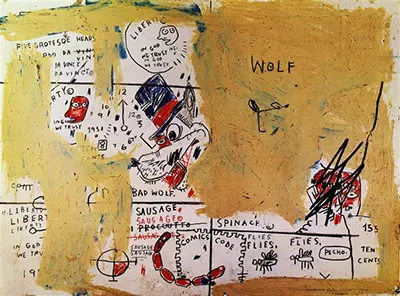Part of the 1970s-80s Neo-Expressionist art movement, Basquiat's paintings are full of frenetic but also very directed energy and vivid simple colours. The resulting works appear raw and unfocused, but in truth that is the opposite of what they are. To consider them so is to ignore their context, their impact and most significantly the concepts that give them depth. Basquiat's use of imagery and motifs suggestive of African art made it easy to stereotype him as a black artist but he was keen to be known simply as an artist. This antagonism between how he wanted to present himself and how he was pigeon-holed by others is documented through his work. The exploration of subject matter in his paintings is also an exploration of himself and how he responds to what he is representing.
His work is confrontational, demanding a response from its viewers - it is not easy to ignore; through it we understand his internal struggles. Throughout his career Basquiat had a love-hate relationship with the art establishment. His early career in street art (he collaborated with Al Diaz until 1980 under the tag SAMO) followed by his entry into the gallery world was a knife edge - he was accused of selling out by one world and never compromised himself enough to 'fit into' the other. This conflict between his past and his present is reflected within his work. His paintings reflect and comment on the conflict inherent in the human experience. There has been a plethora of artists over the years, particularly in more recent years, who have struggled with finding a comfortable position for their work, which helps them to achieve success whilst also allowing their original intentions and aims to remain pure and present.
Basquiat's paintings produced an iconography which feels truly modern, whilst also taking inspiration from different styles of art going back many centuries. He studied African art in detail, as well as western art, as shown in his abstract depiction of Italian Mannnerist painter, Titian. European art itself has long since been influenced from ideas found abroad, be it in Africa, South America or Asia. Our famous New Yorker produced a new take on this idea, combining what had gone before with his own personal culture that was a fusion of different things. The cycle of art history then continues onwards through to the next generation, with the likes of Banksy in the UK taking great inspiration and ideas from this maveric artist's short but groundbreaking career. Sometimes, both in art and music, those that die youngest, leave the greatest impact behind - it is as if their creative peak remains in a permanent state forever.
The Impact of SAMO on Basquiat
From 1976-1979 Basquiat and Al Diaz tagged Manhattan, signing themselves as SAMO. The tags came with pithy soundbites such as "SAMO does not cause cancer in laboratory animals" or "SAMO for those of us who merely tolerate civilization." The impact of this direct way of expressing an idea to is visible in Basquiat's paintings. His work retained the sense of speed and clear message necessary to make powerful graffiti.
The works themselves are a visual collage, mixing images and words to comment on the world. Pieces such as 'Hollywood Africans' or 'Irony of Negro Policeman' show the use of words to add meaning and to direct the attention of the viewer. Basquiat used words skilfully on his canvases to communicate directly with his audience and to excite a response from them.
Basquiat and Neo-Expressionism
The idea of Neo-Expressionism was to return to sensual expressive painting that rejected the formal rigour and sterility of the abstract Minimalist and Conceptualist art being produced at the time. The deceptively primitive style of Basquiat embodies perfectly the essence of Neo-Expressionism. Drawing on themes of culture, his own history and mythology he used expressive brushstrokes and intense colours to communicate his ideas.
Motifs
Recurring motifs with Basquiat's paintings include references to African art including the griot (or bard or minstrel) and the venerable crown. The simple and yet iconic crown was used to highlight the special things in his work- as seen in 'Tuxedo' or 'King Alphonso'. When understood as a storyteller it is easy to draw a connection between griot and artist in works such as 'Gold Griot' or 'The Nile,' and thus to recognise its significance to Basquiat.
Jean-Michel Basquiat and Andy Warhol
Pop Art had reintroduced an interest in certain subject matter and was a rejection of the highbrow, instead using images from popular culture to comment on the culture itself. The sense of mass production in Pop Art reflected Basquiat's early days, producing his own style of baseball cards by xeroxing small pieces of his art and then selling the results for $1 a piece. It is therefore unsurprising that Basquiat sought out Andy Warhol and that the two collaborated together producing works such as 'Arm and Hammer' and 'Olympics' which mix the styles of Pop Art and Neo-Expressionism.
In truth these pieces showcase more about Jean-Michel Basquiat than they do Warhol. Basquiat's vision and art overrun the paintings, almost flooding out the input of Warhol. The sense that he never compromised himself- even for a grand master of his craft - is very clear here. So too is his personal visual language. The use of script and motifs remains, with Warhol's work becoming simply another part of Basquiat's visual collage.
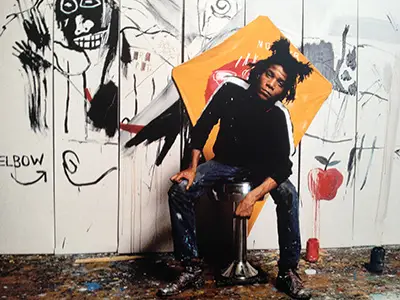


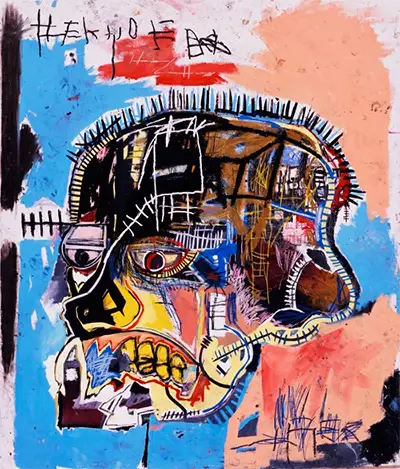
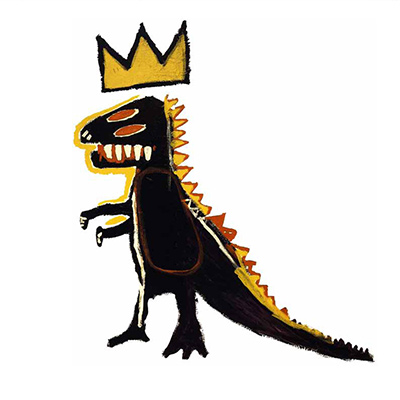

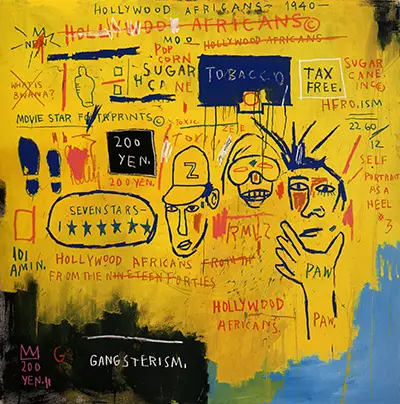
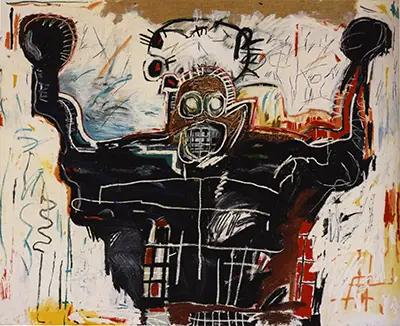


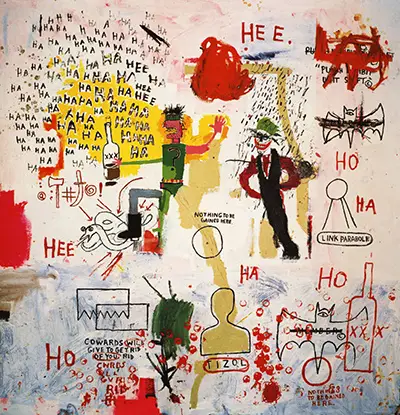
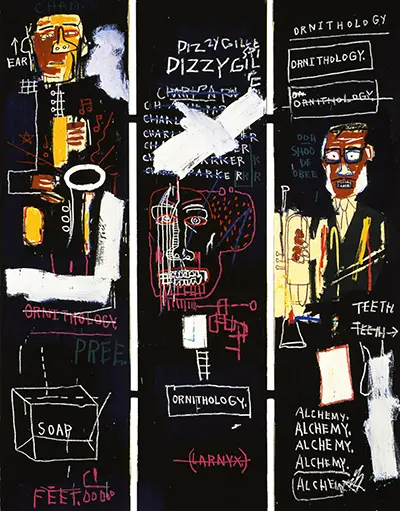
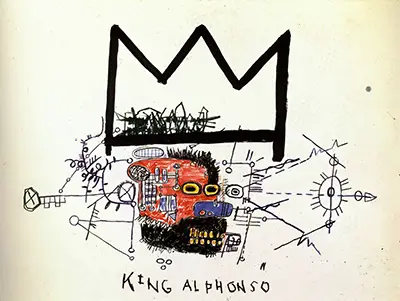
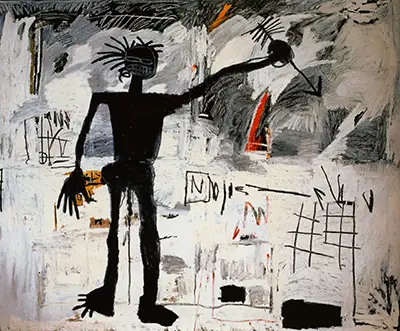
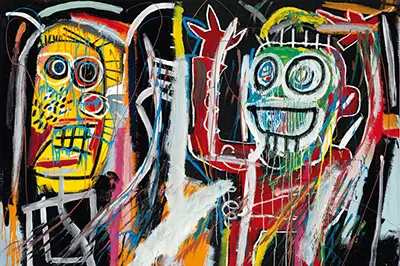
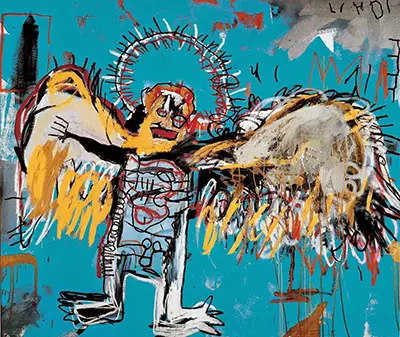
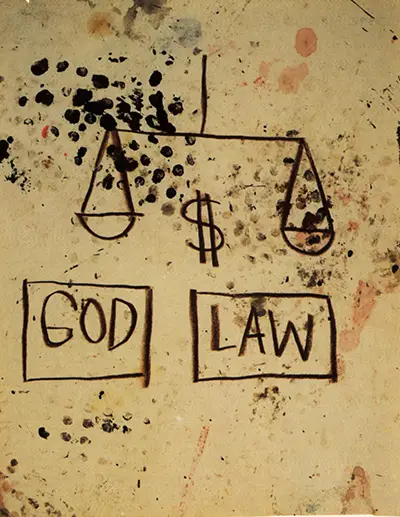
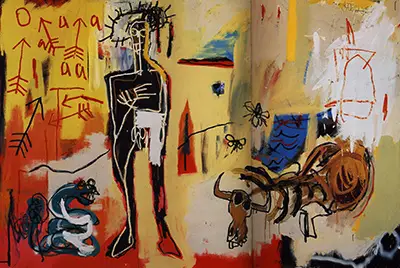
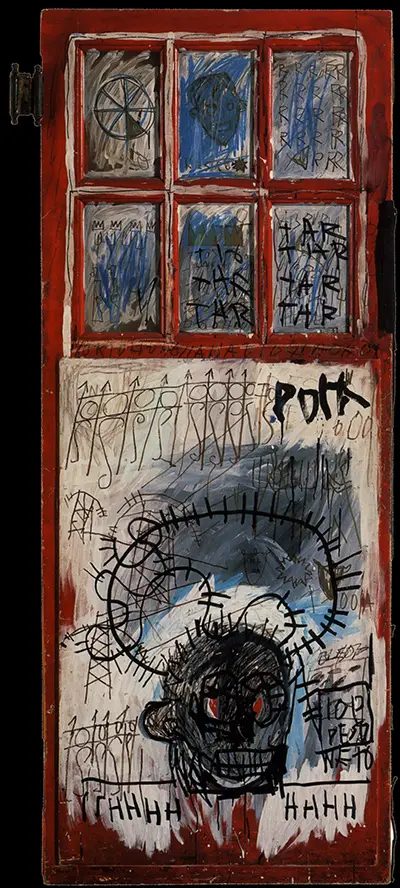


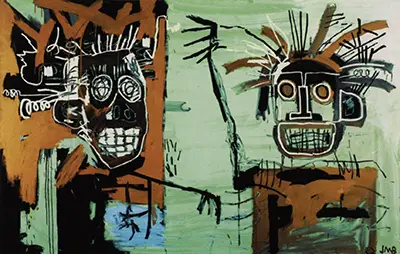
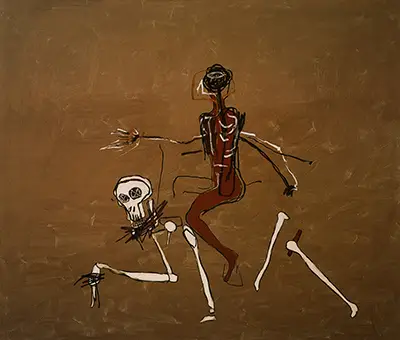
 Jean-Michel Basquiat.jpg)
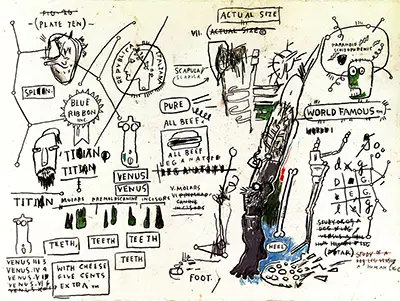
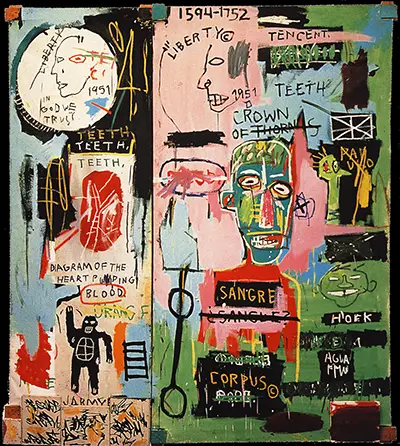

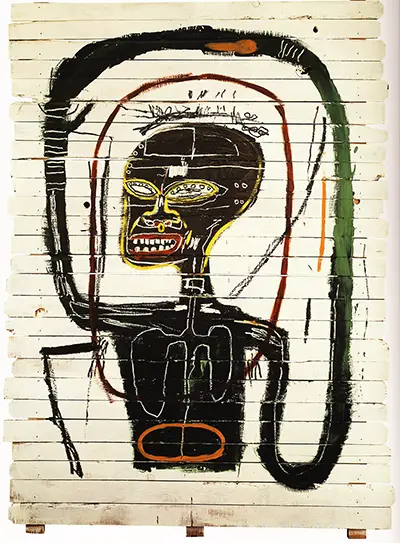
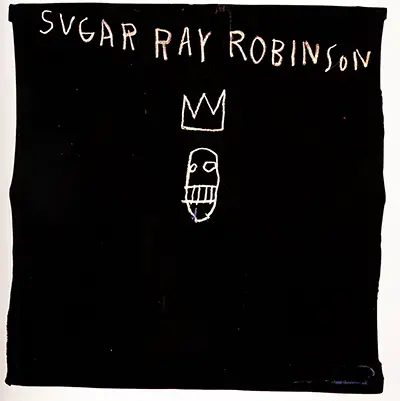
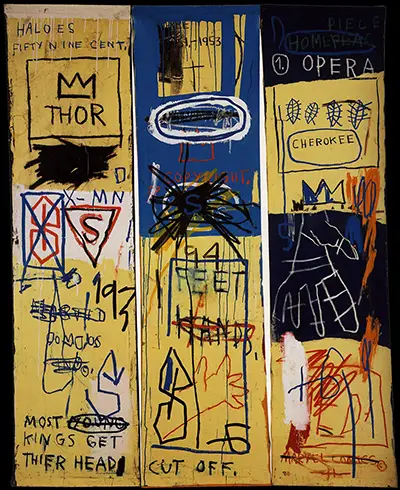


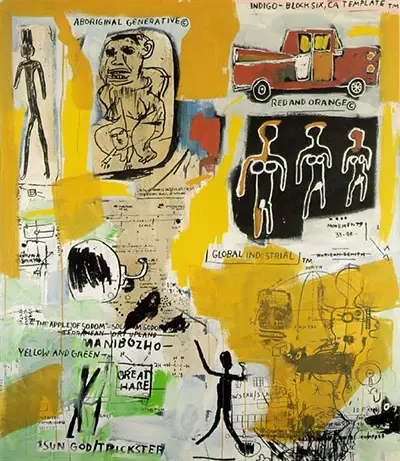
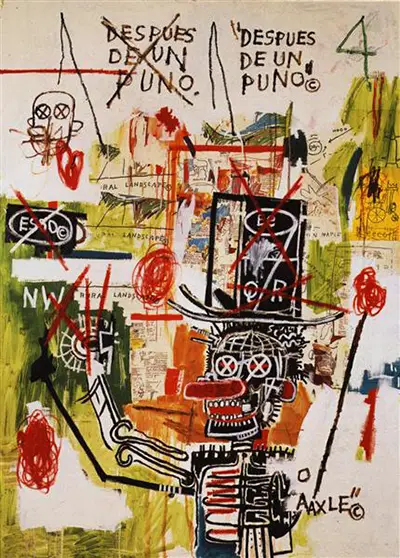
 Jean-Michel Basquiat.jpg)
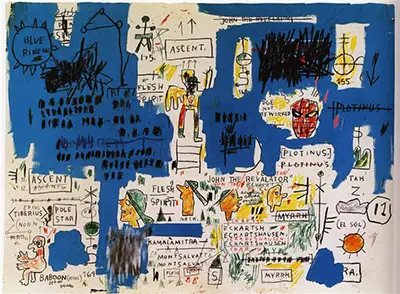
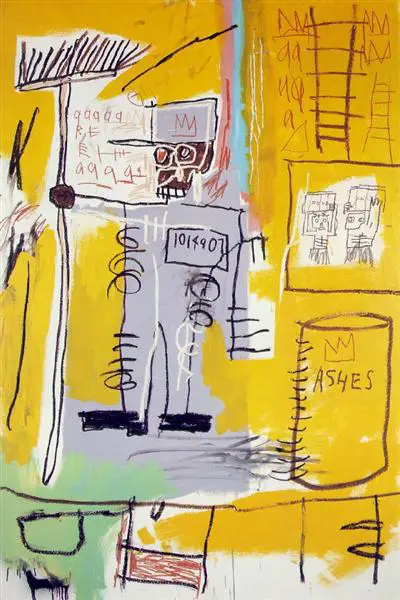
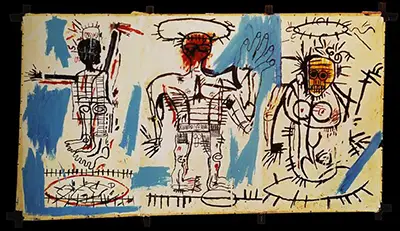
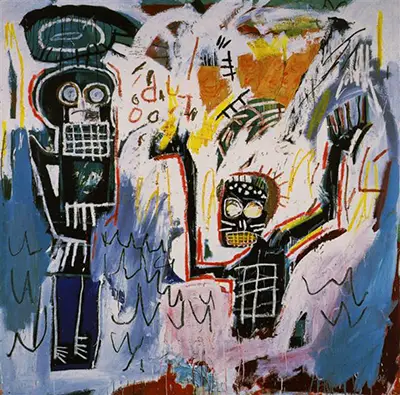
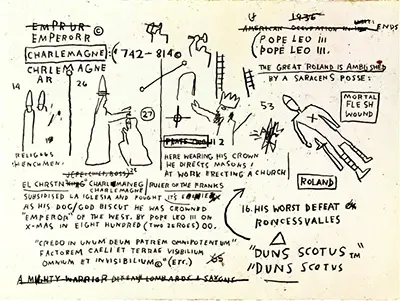
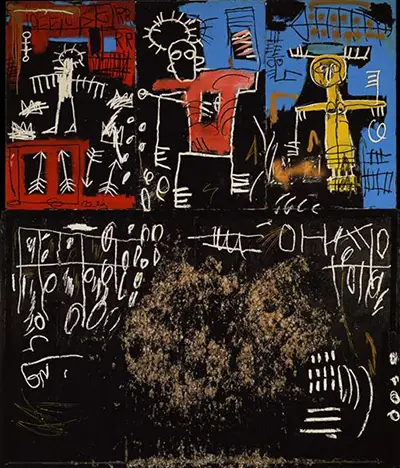
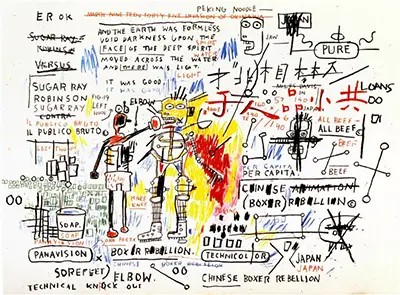

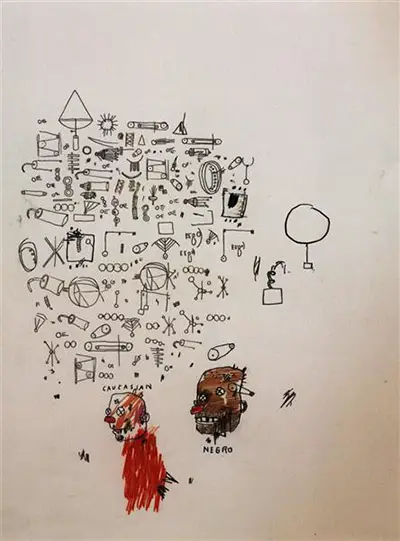
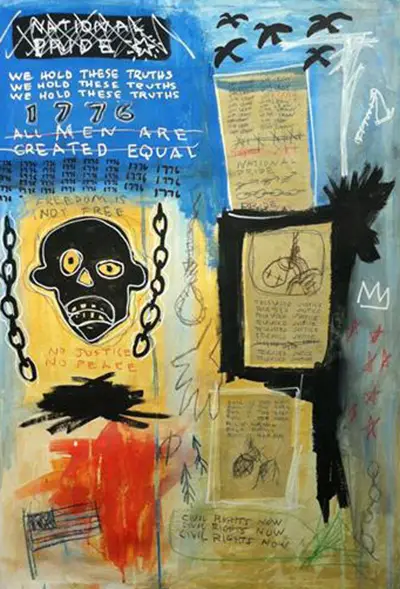
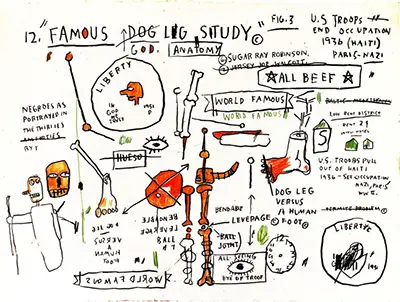
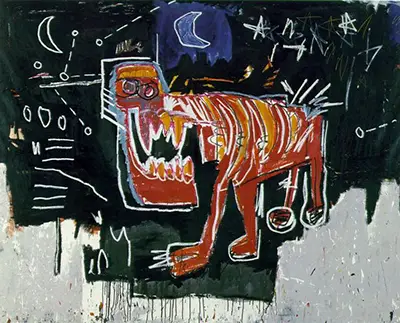
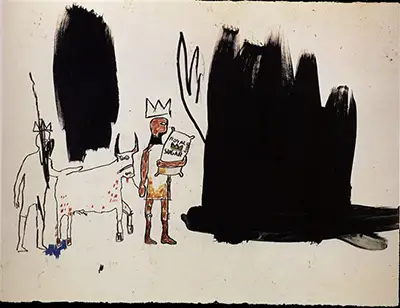
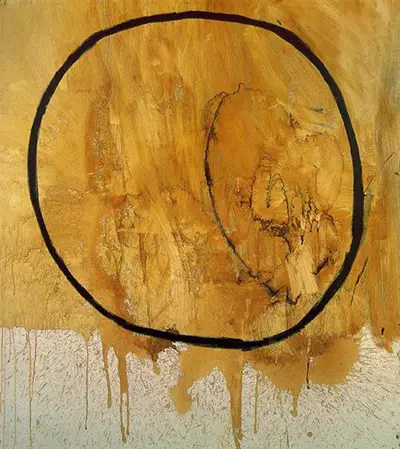
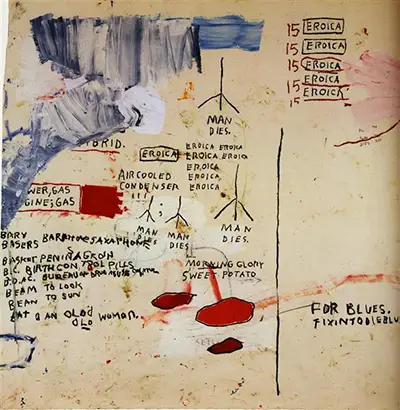
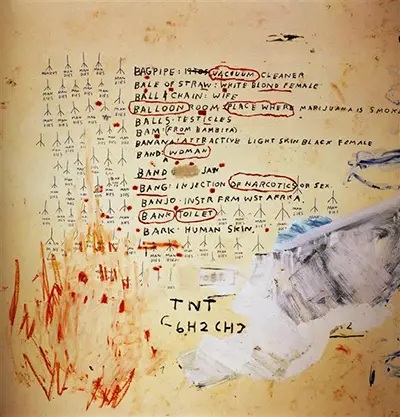

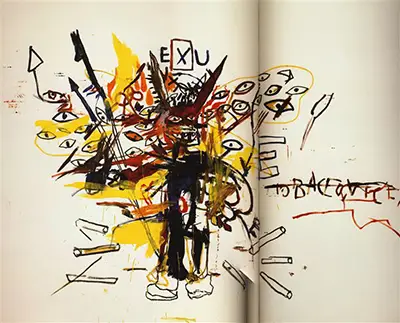
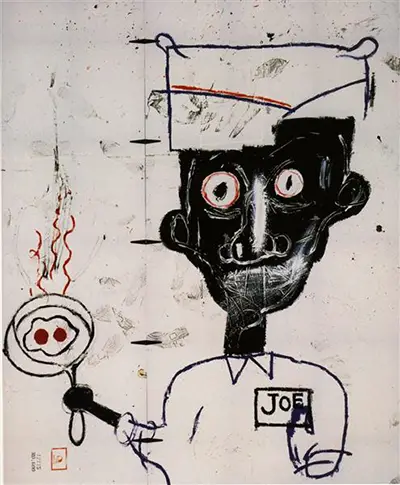
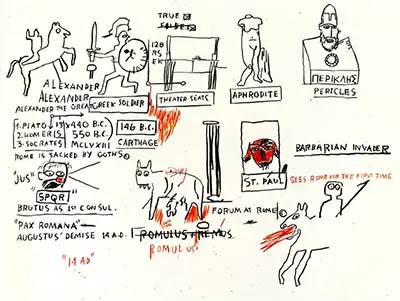
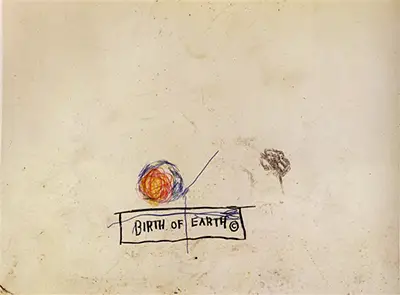
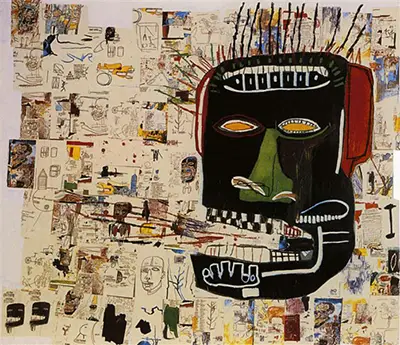
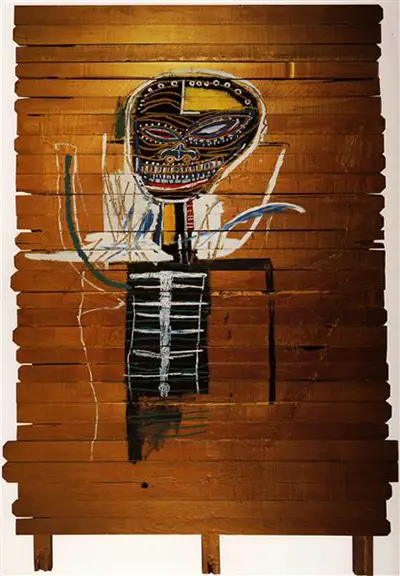
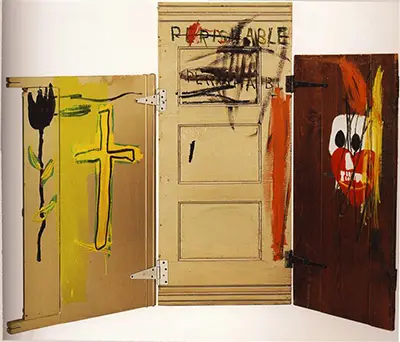

 Jean-Michel Basquiat.jpg)
 Jean-Michel Basquiat.jpg)
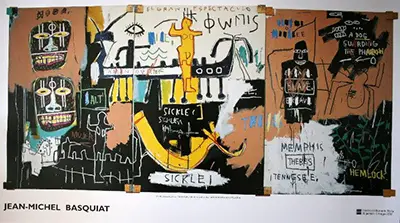
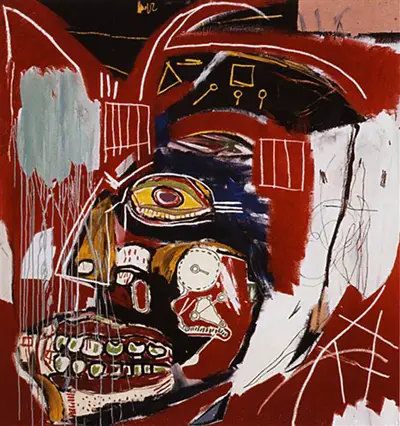
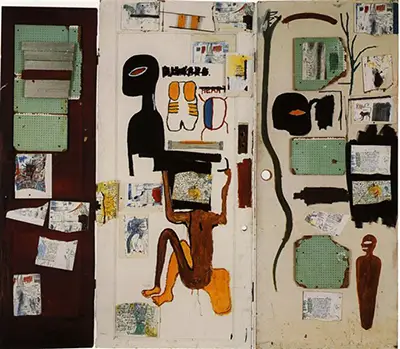
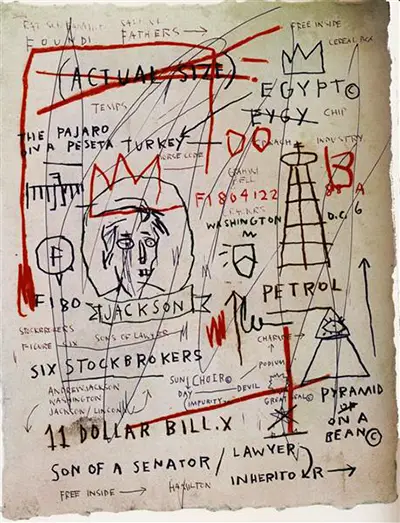
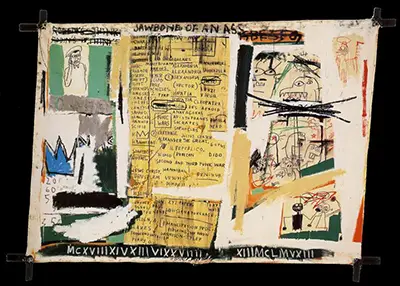
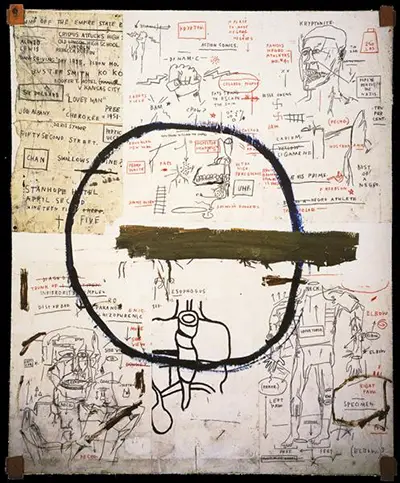
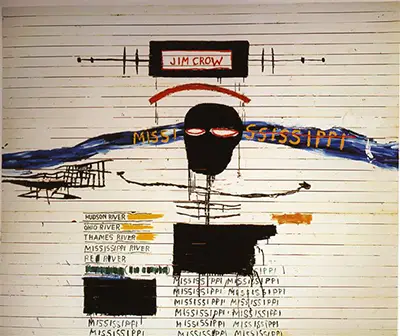

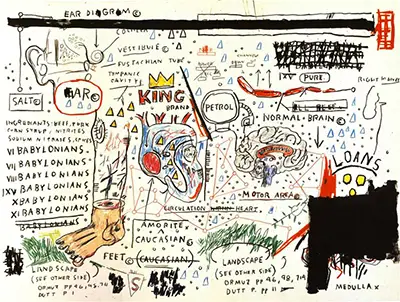
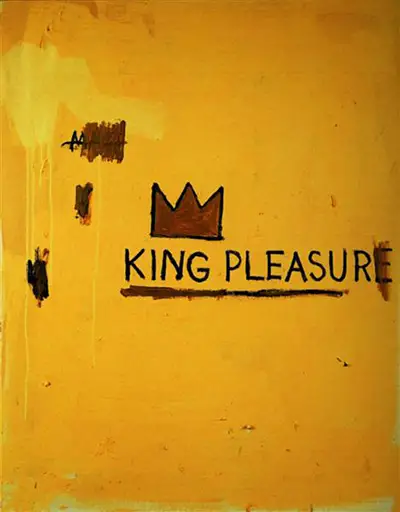
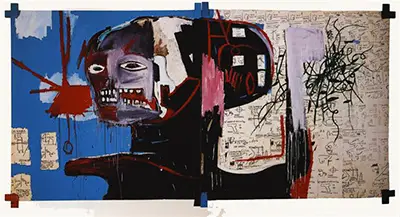
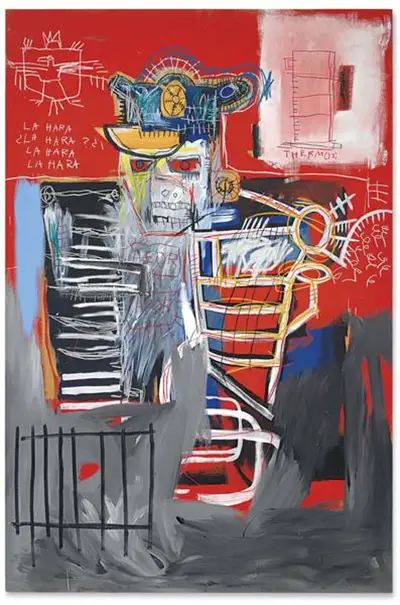
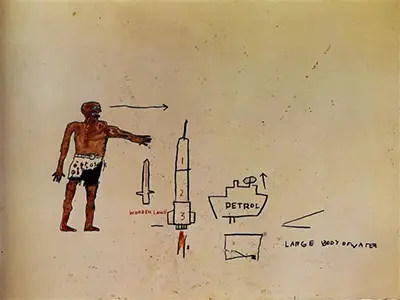
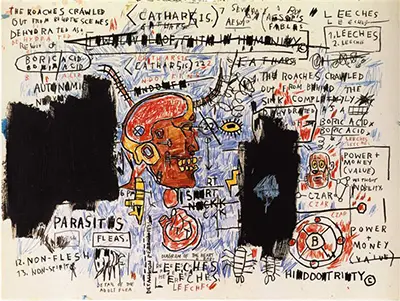


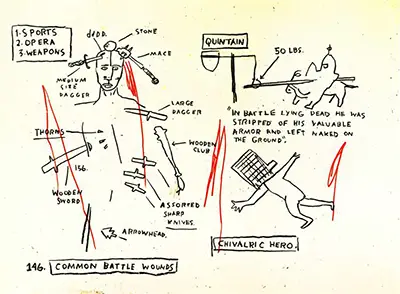
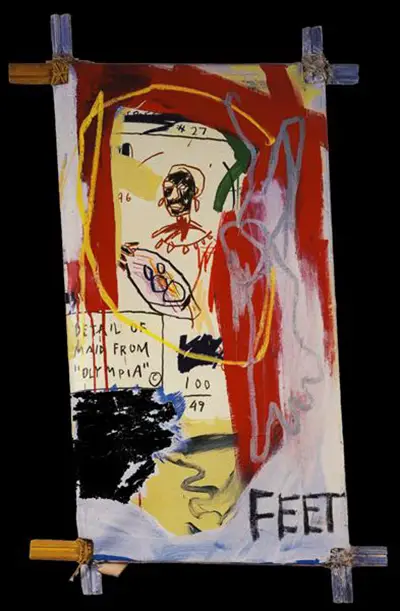
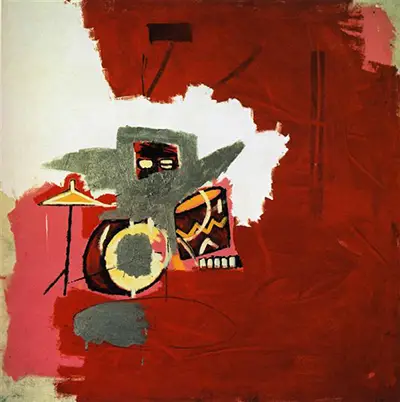
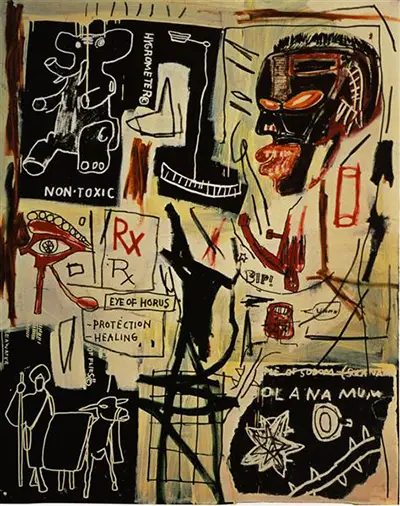
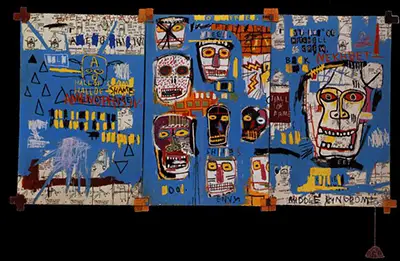
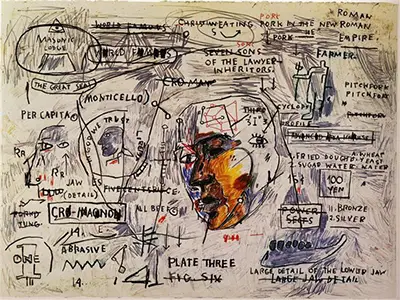
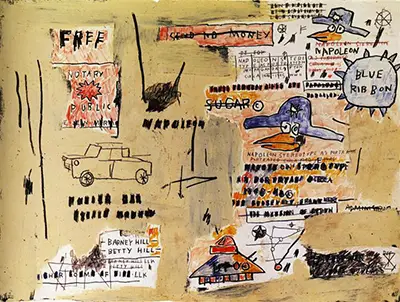
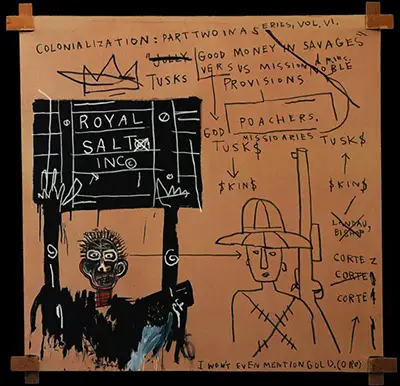
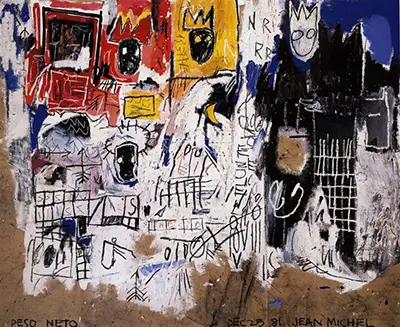

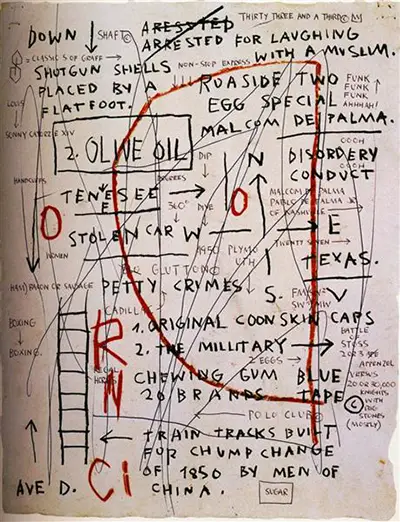
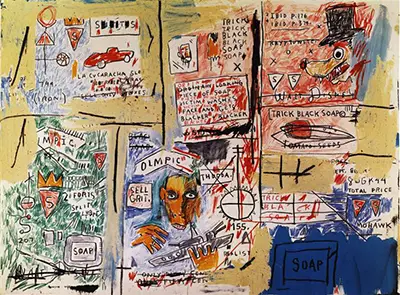
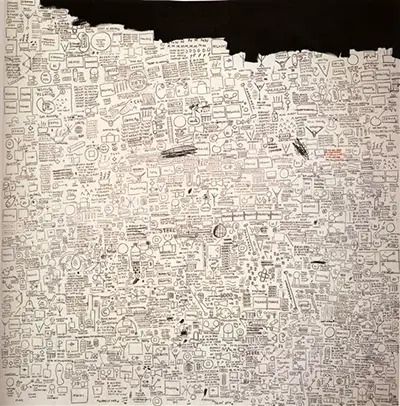
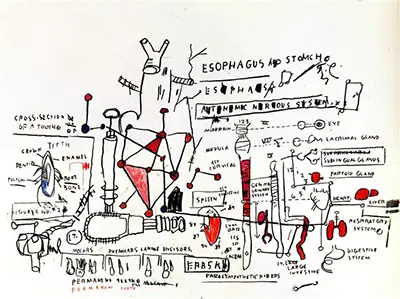
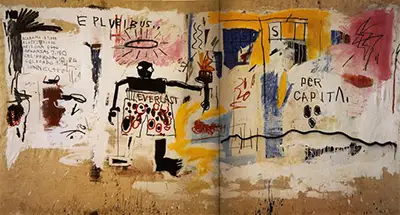
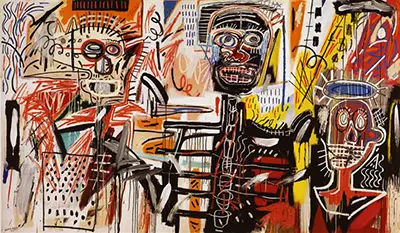
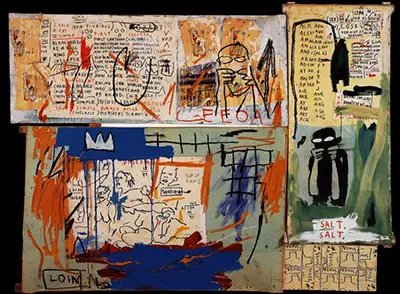

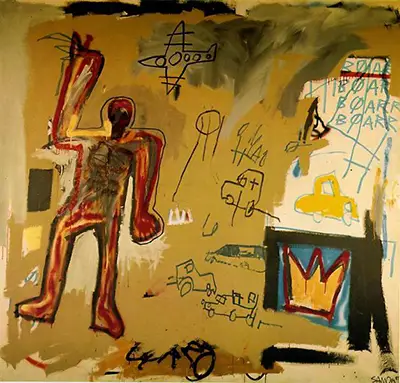
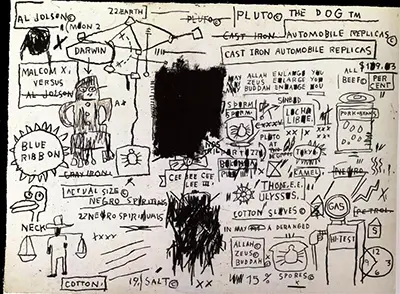
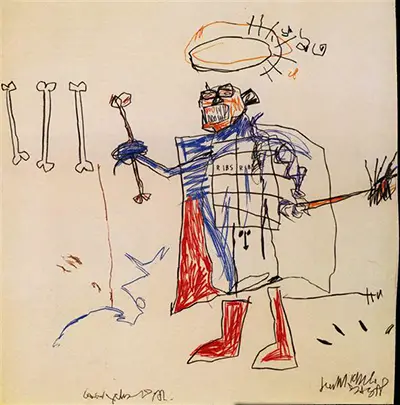



 Jean-Michel Basquiat.jpg)
 Jean-Michel Basquiat.jpg)
 Jean-Michel Basquiat.jpg)
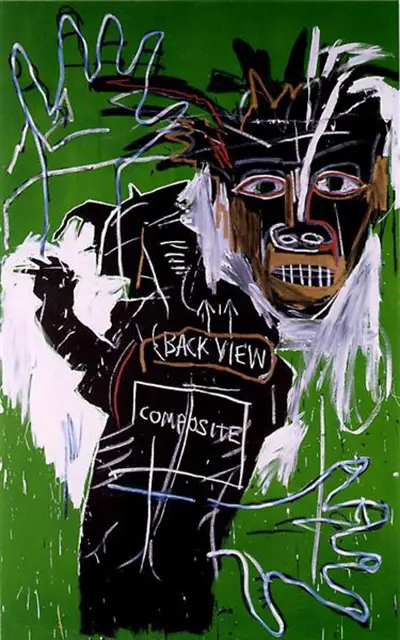
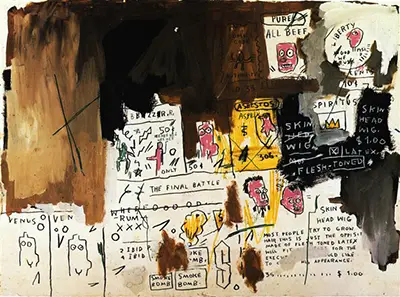

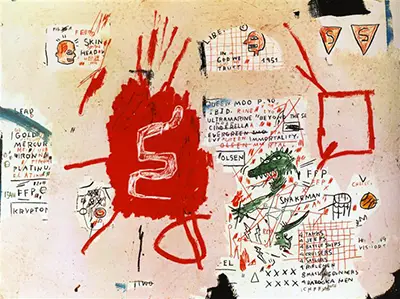
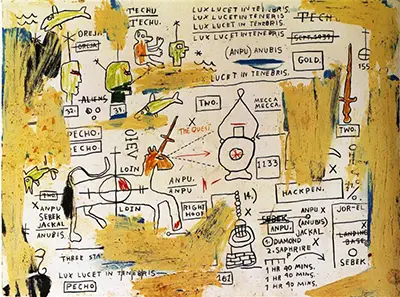
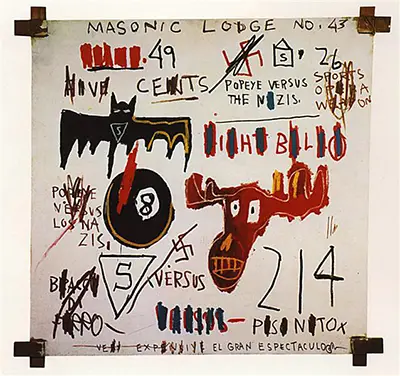
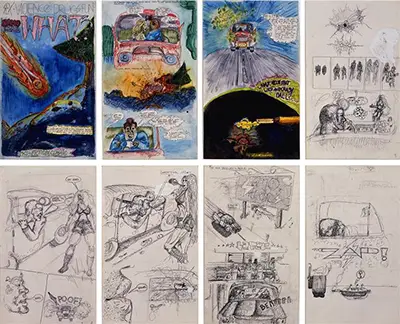
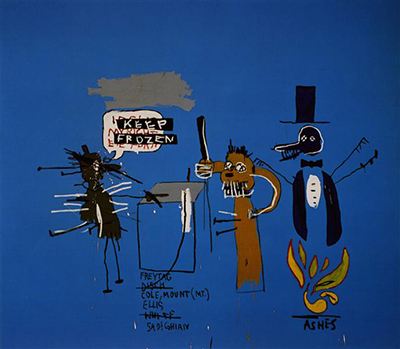



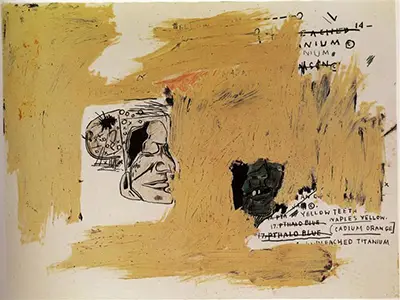
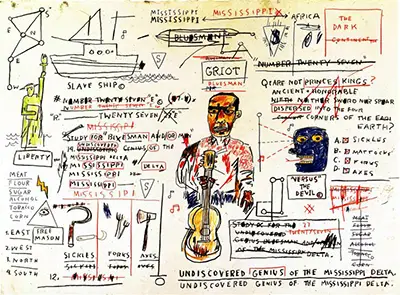
 Jean-Michel Basquiat.jpg)
 Jean-Michel Basquiat.jpg)
 Jean-Michel Basquiat.jpg)
